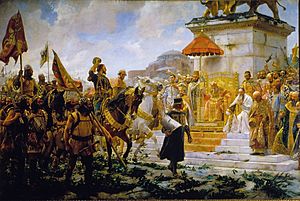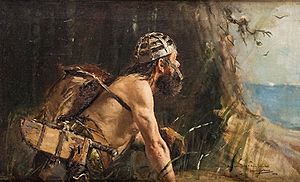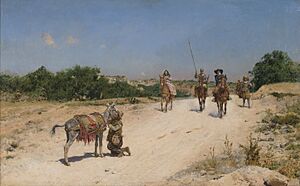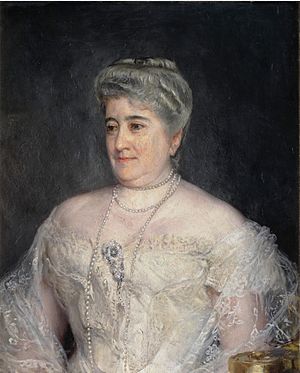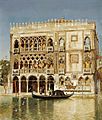José Moreno Carbonero facts for kids
Quick facts for kids
José Moreno Carbonero
|
|
|---|---|
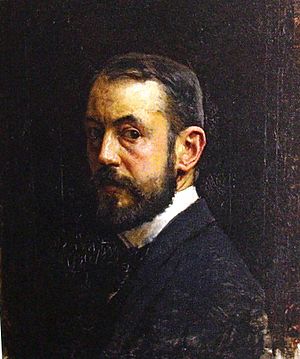
Self-portrait, José Moreno Carbonero
|
|
| Born | 24 March 1858, Málaga, Spain |
| Died | 15 April 1942 (aged 82), Madrid, Francoist Spain |
| Nationality | Spanish |
| Education | School of Fine Arts, Málaga |
| Known for | Painting |
| Movement | Orientalist |
José Moreno Carbonero (born March 24, 1858 – died April 15, 1942) was a famous Spanish painter. He was a very important artist from the Málaga School of Painting. Many people see him as one of the last great painters of history scenes from the 1800s.
He was also known for painting amazing portraits of important people in Madrid. Besides that, he painted everyday life scenes, landscapes, city views, and still lifes (paintings of objects).
José Moreno Carbonero was famous both in Spain and around the world while he was alive. He won many awards. Some of these include prizes at the World's Fair in Paris in 1889 and the only medal at the World's Columbian Exposition in Chicago in 1893.
You can find his paintings in some of the most important museums. The El Prado Museum in Madrid has a large collection of his art. Some of his most famous works are 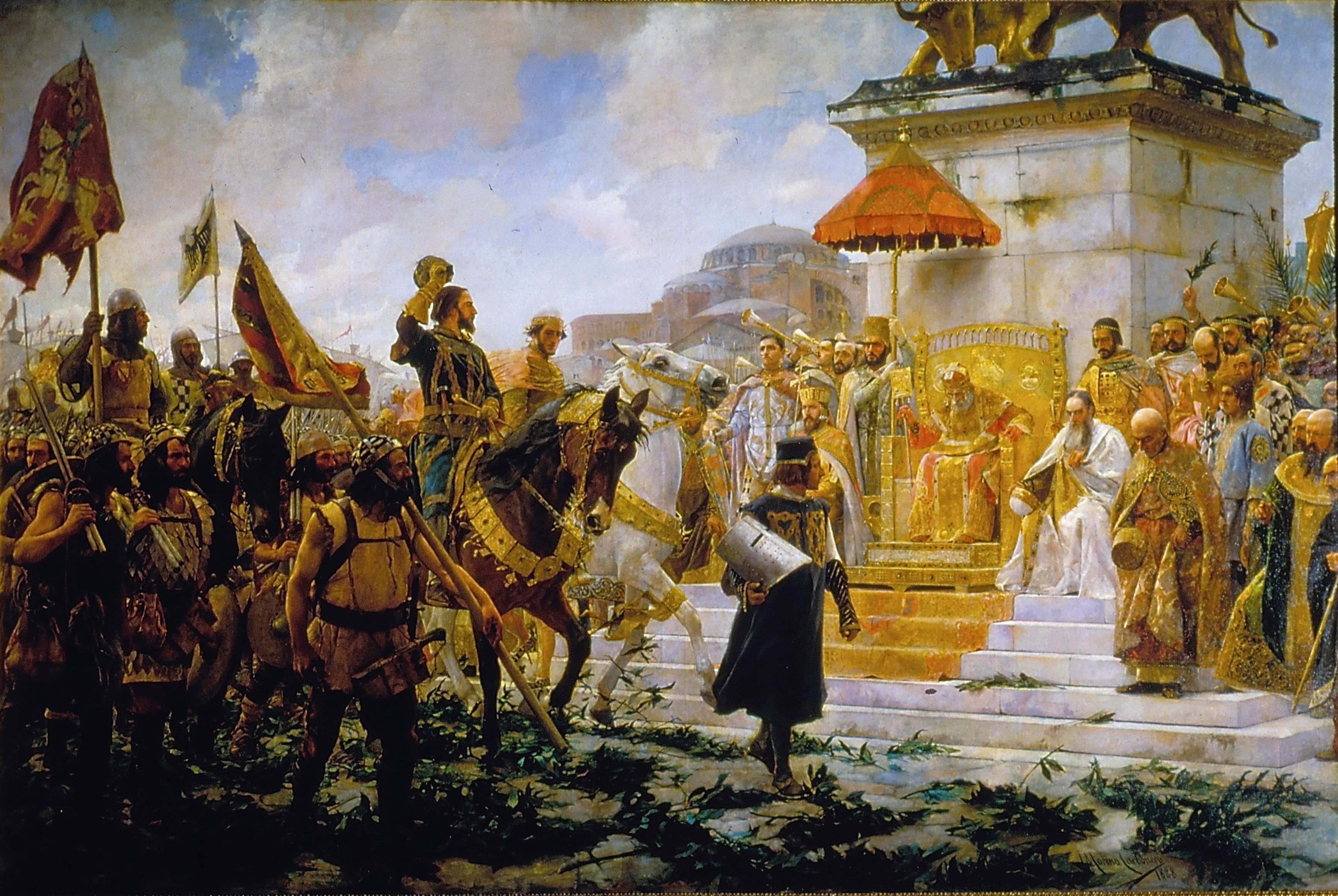 (1888) and
(1888) and 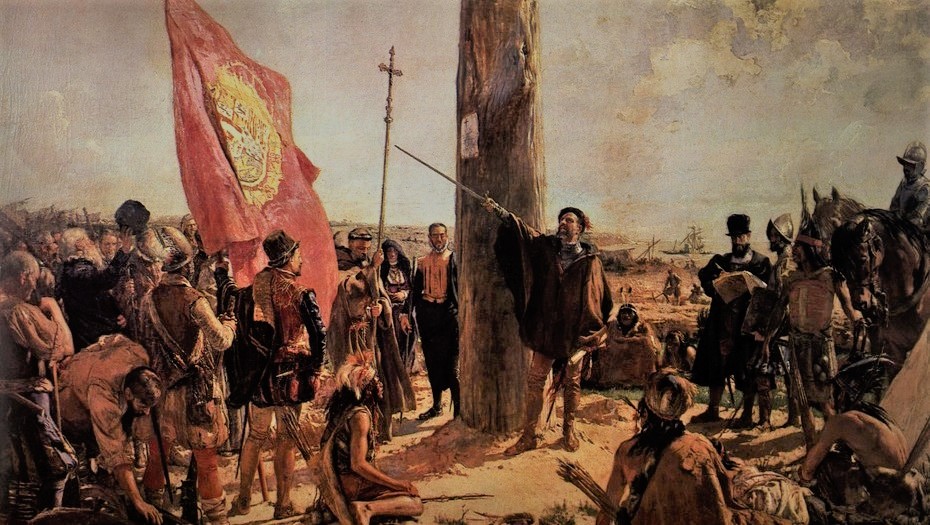 (1910–1924).
(1910–1924).
Contents
Discovering José Moreno Carbonero's Early Life
José Moreno Carbonero was born in the Perchel area of Málaga, Spain. His father was a carpenter. There was some confusion about his exact birth date. However, his birth certificate shows he was born on March 24, 1858.
He was a talented artist from a very young age. In 1868, he joined the fine arts school in his hometown. He also took classes at the studio of Bernardo Ferrándiz.
José sold his first painting when he was just fifteen years old. He earned 2000 pesetas for it, which was a lot of money back then. Because he was so good at oil painting at a young age, people called him "el niño Moreno" (the Moreno child).
Bernardo Ferrándiz was the top artist in Málaga at that time. He taught young José about painting history scenes. Ferrándiz also shared his ideas about freedom and being independent. In 1872, when he was only fourteen, José won a gold medal at an exhibition in Málaga.
Exploring José Moreno Carbonero's Career
In 1873, José Moreno Carbonero visited Morocco. There, he started painting scenes with African themes. He was inspired by another artist named Mariano Fortuny.
In 1875, he went to Paris thanks to a scholarship from Málaga. In Paris, he joined the studio of painter Jean-Léon Gérôme. Gérôme was known for his academic and Orientalist artworks. José also met the famous art dealer Adolphe Goupil.
Goupil introduced him to the market for small paintings of everyday life, called tableautins. José became very successful with these paintings. His style in this area was as brilliant as Fortuny's.
In 1881, Moreno Carbonero went to study in Rome with a scholarship. After returning to Spain, he won gold medals at national exhibitions. He won in 1881 with his painting 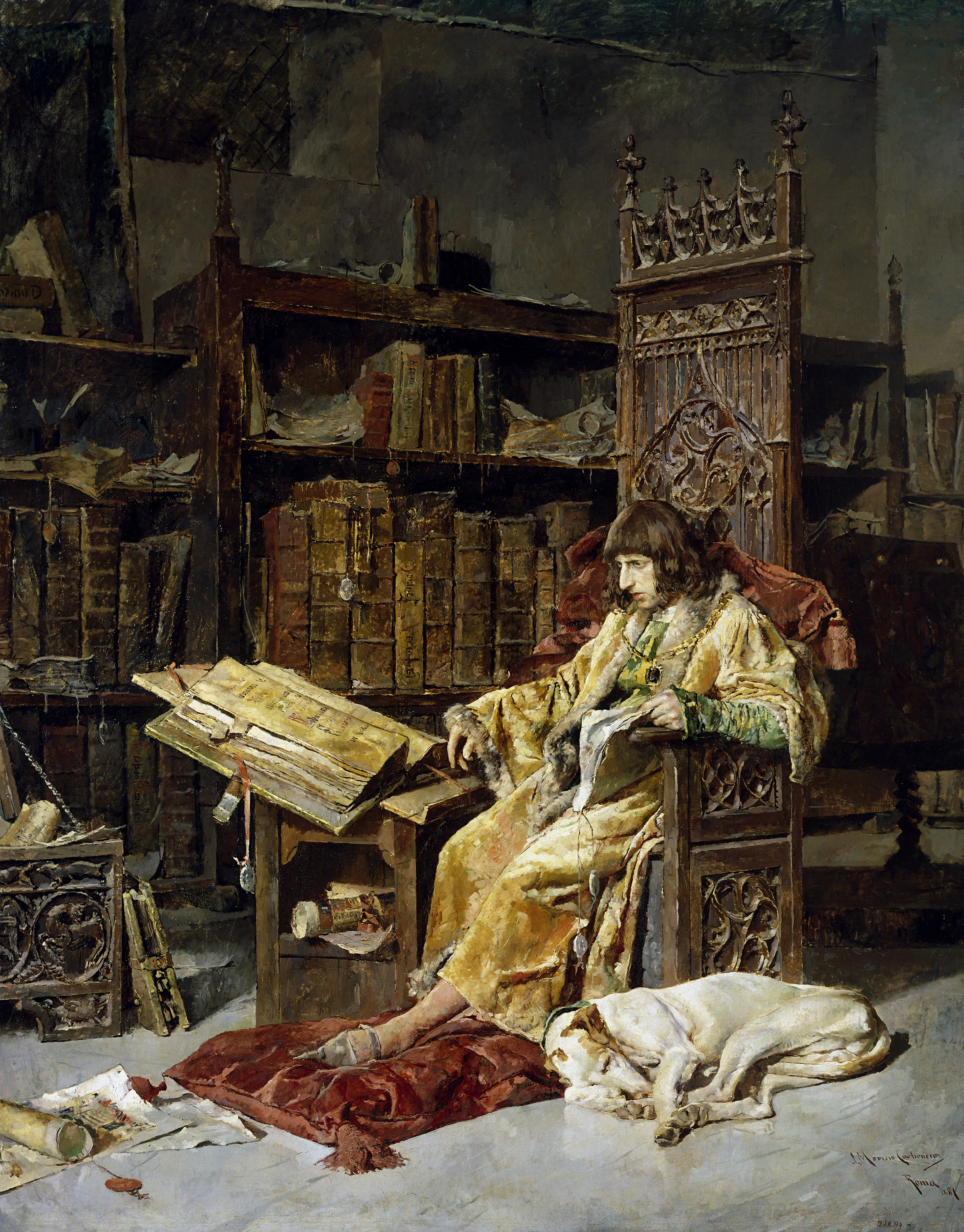 . He won again in 1884 with
. He won again in 1884 with 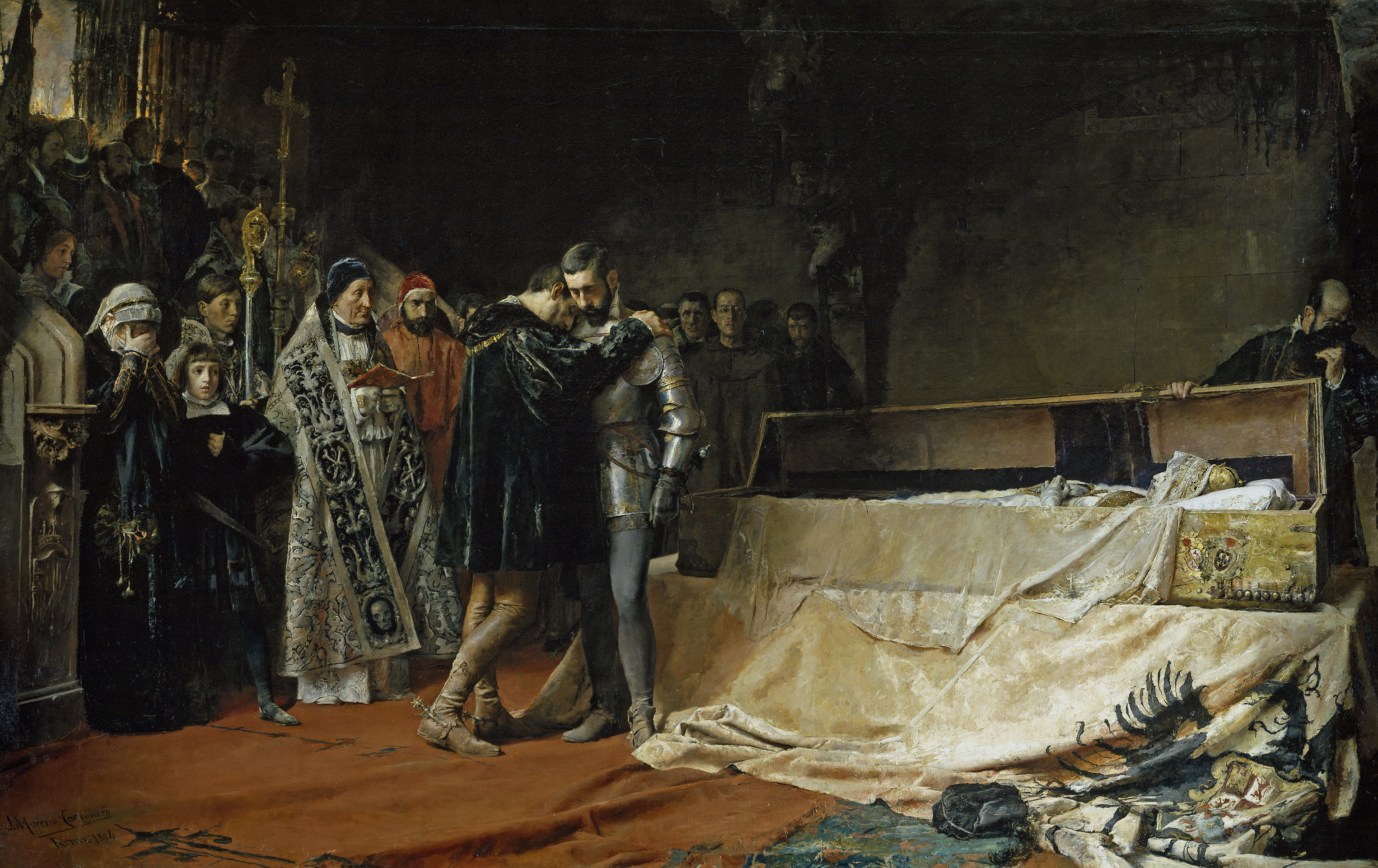 , which he painted in Rome.
, which he painted in Rome.
As he became more famous, different official groups asked him to create art. In 1888, the Spanish Senate asked him to paint  . This painting is one of the most amazing historical artworks. It still hangs in the Conference Hall of the Senate today.
. This painting is one of the most amazing historical artworks. It still hangs in the Conference Hall of the Senate today.
This large painting shows the Italian mercenary Roger de Flor and his Almogavar warriors entering Constantinople. They were there to help the Byzantine emperor against the Turkish. For this work, Moreno Carbonero did a lot of research in Paris. He studied Byzantine buildings, clothes, and decorations. He even used dozens of models in the Málaga bullfighting arena to make the scene look real. He also painted smaller works of individual Almogavar warriors based on this painting.
In 1910, the Argentine Government asked him to paint a large canvas. The painting was about the  . This was to celebrate 100 years since Argentina's revolution. King Alfonso XIII of Spain gave this painting as a gift to the city of Buenos Aires. The king even visited Moreno Carbonero's studio while he was working on it.
. This was to celebrate 100 years since Argentina's revolution. King Alfonso XIII of Spain gave this painting as a gift to the city of Buenos Aires. The king even visited Moreno Carbonero's studio while he was working on it.
Moreno Carbonero also won the highest award at the Vatican Exhibition in 1888. He took part in international exhibitions in Munich and Vienna. He received a second medal at the World's Fair in Paris in 1889. He also won a great gold medal in Budapest in 1890 and an honorary diploma in Berlin in 1891. In 1893, he won the only medal at the World's Columbian Exposition in Chicago.
From 1892, he taught drawing at the Real Academia de Bellas Artes de San Fernando. He was also a member of this important art organization. In 1924, he was named Hijo Predilecto, which means "Favorite Son" of his region.
José Moreno Carbonero passed away in Madrid on April 15, 1942. His body was moved to Málaga, where he is buried in the San Miguel cemetery. In 1958, a monument by Mariano Benlliure was put up in the Puerta Oscura gardens to honor him.
Understanding José Moreno Carbonero's Style
José Moreno Carbonero was mainly a history painter. He also painted portraits, scenes of everyday life, some landscapes, city views, and still lifes. His art style was varied and was mostly influenced by the work of Fortuny. In his portraits, he used a very realistic style.
As a history painter, Moreno Carbonero was excellent at clear drawing and neat brushstrokes. In his history paintings, he was influenced by the small genre paintings he made when he was younger. He liked to show the feelings and reactions of people in past events, rather than just the big moments.
He cared a lot about making his history paintings historically accurate. For example, he asked for the painting  to be sent back to him. He had already given it to the government in Buenos Aires in 1909. But he had read more about the city's history and wanted to make big changes to make it more accurate. He returned the updated painting in 1924.
to be sent back to him. He had already given it to the government in Buenos Aires in 1909. But he had read more about the city's history and wanted to make big changes to make it more accurate. He returned the updated painting in 1924.
As a portrait painter, Moreno Carbonero created elegant portraits of important people from Madrid's high society. These portraits were known for showing the people in a fancy and rich way.
In the first few decades of his career, Moreno Carbonero focused on genre painting. His genre paintings showed daily life or scenes from famous Spanish literature, especially stories about Don Quixote.
The Museum of Fine Arts in Málaga has more than 30 of José Moreno Carbonero's artworks.
Gallery
See also
 In Spanish: José Moreno Carbonero para niños
In Spanish: José Moreno Carbonero para niños



